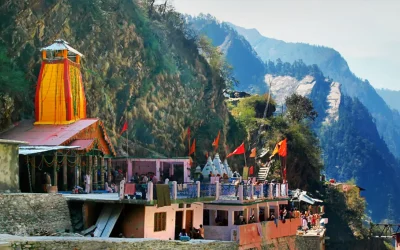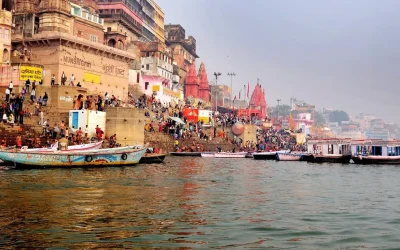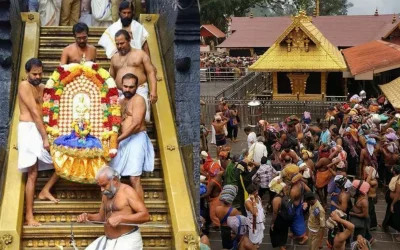Vittala Temple: A Jewel of Hampi
Introduction
Nestled in the ancient city of Hampi, Karnataka, India, the Vittala Temple stands as a monumental testament to the grandeur of Vijayanagara Empire architecture and artistry. Renowned for its intricate carvings, stunning sculptures, and musical pillars, this temple is one of the most celebrated landmarks in Indian history and a UNESCO World Heritage Site.
Historical Background
The Vittala Temple complex is believed to have been constructed during the reign of King Devaraya II of the Vijayanagara Empire, which flourished from the 14th to the 17th centuries. The temple is dedicated to Lord Vittala, a form of the Hindu deity Vishnu, and it is renowned for its unique architectural features and the artistic excellence of its sculptures.
The Vijayanagara Empire was a prominent South Indian empire that played a significant role in Indian history, known for its advancements in art, architecture, and urban planning. The Vittala Temple, with its rich array of carvings and elaborate design, reflects the peak of Vijayanagara’s artistic and architectural achievements.

Architectural Marvels
The Stone Chariot: Perhaps the most iconic feature of the Vittala Temple is its Stone Chariot, which stands as a symbol of the temple’s grandeur. This chariot, intricately carved from granite, resembles the ceremonial chariots used in religious processions. The chariot’s detailed carvings depict various deities, mythological scenes, and floral motifs. Despite its majestic appearance, it is purely ornamental and does not serve as a functional vehicle.
Musical Pillars: The Vittala Temple is renowned for its ‘musical’ pillars in the Ranga Mandapa (the central hall). Each of these pillars, when struck, produces different musical notes. Crafted with such precision, the pillars demonstrate the sophisticated craftsmanship of the Vijayanagara artisans. The sound produced is not just a simple tone but a complex array of musical notes, making the Ranga Mandapa a unique auditory experience.
The Main Temple Complex: The main temple structure features a vast courtyard, with an array of pillared halls, mandapas (pavilions), and ornate sculptures. The architecture combines both functionality and aesthetics, with the large, elaborately carved pillars and walls depicting various deities, celestial figures, and intricate patterns.
Kalyana Mandapa: Another significant part of the temple complex is the Kalyana Mandapa, an ornate pavilion used for conducting marriage ceremonies and other rituals. This mandapa is distinguished by its intricately carved pillars and ceilings, reflecting the temple’s high level of artistic and architectural sophistication.
Cultural and Religious Significance
The Vittala Temple, like many ancient Hindu temples, was not just a place of worship but also a center of cultural and social activities. During its prime, it was a hub for various religious ceremonies, festivals, and gatherings. The temple’s artistic elements, such as the Stone Chariot and Musical Pillars, were designed not only for devotional purposes but also to showcase the artistic prowess of the Vijayanagara Empire.
Timings and Accessibility
The Vittala Temple is open to visitors throughout the week. The typical visiting hours are from 6:00 AM to 6:00 PM. However, it is advisable to check local schedules or with local authorities for any changes in timings, especially during festivals or maintenance periods.

How to Reach
Hampi is well-connected to major cities in Karnataka and other parts of India. The closest major city is Hospet, which is approximately 13 kilometers from Hampi. Hospet has a railway station and bus services connecting it to major cities. From Hospet, one can hire a taxi or take a bus to reach Hampi.
Hampi itself is an ancient town with many historical sites. The Vittala Temple is situated in the northern part of the town and is accessible by local transport or rental vehicles. The local transportation in Hampi includes cycle rickshaws, which provide a convenient way to explore the temple and its surroundings.
Conservation Efforts
As a UNESCO World Heritage Site, the Vittala Temple has been the focus of various conservation and preservation efforts. These initiatives aim to protect the temple’s intricate carvings, structural integrity, and historical value. Organizations and local authorities are involved in ongoing maintenance and restoration projects to ensure that the temple continues to be a source of cultural pride and historical significance for future generations.
Visitor Tips
Dress Code: Visitors are advised to dress modestly while visiting the temple. Traditional attire is often preferred, but respectful, modest clothing is essential.
Photography: Photography is generally allowed in most areas of the temple complex, but it is advisable to check for any restrictions. Drones are typically prohibited.
Guides: Hiring a local guide can enhance your experience by providing in-depth information about the temple’s history, architecture, and significance.
Respect Local Customs: While visiting the temple, be respectful of local customs and practices. Follow any guidelines or rules set by the temple authorities.
Conclusion
The Vittala Temple in Hampi stands as a magnificent reminder of the artistic and architectural brilliance of the Vijayanagara Empire. Its stunning Stone Chariot, melodious Musical Pillars, and intricate carvings offer a glimpse into the grandeur of ancient Indian civilization. As a UNESCO World Heritage Site, it continues to captivate visitors with its historical significance, cultural richness, and architectural marvels, making it a must-visit destination for anyone interested in India’s rich heritage.






